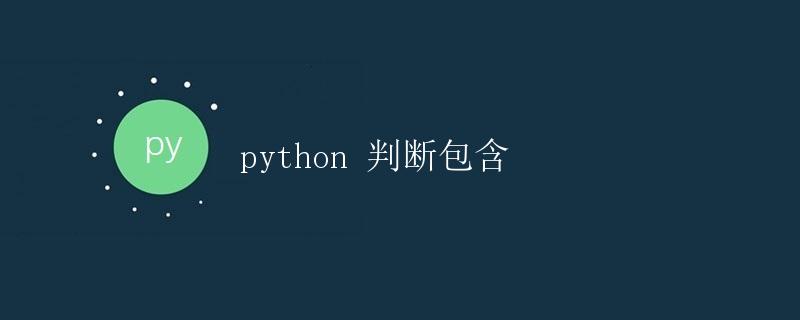Python判断包含

在编程中,经常会遇到需要判断一个字符串是否包含另一个字符串的情况。Python提供了多种方法来实现这一功能,本文将详细介绍这些方法并提供一些示例。
使用in关键字
Python中可以使用in关键字来判断一个字符串是否包含另一个字符串。in关键字返回一个布尔值,如果包含则返回True,否则返回False。
string1 = "hello world"
string2 = "world"
if string2 in string1:
print("string1包含string2")
else:
print("string1不包含string2")
运行结果:
string1包含string2
使用find方法
另一种判断字符串包含的方法是使用find方法。find方法会在字符串中查找指定的子字符串,如果找到则返回子字符串的索引值,否则返回-1。
string1 = "hello world"
string2 = "world"
if string1.find(string2) != -1:
print("string1包含string2")
else:
print("string1不包含string2")
运行结果:
string1包含string2
使用正则表达式
正则表达式是一种强大的字符串匹配工具,可以用来判断一个字符串是否包含另一个字符串。
import re
string1 = "hello world"
string2 = "world"
pattern = re.compile(string2)
if pattern.search(string1):
print("string1包含string2")
else:
print("string1不包含string2")
运行结果:
string1包含string2
使用startswith和endswith方法
startswith方法用于判断字符串是否以指定的字符串开头,endswith方法用于判断字符串是否以指定的字符串结尾。
string1 = "hello world"
string2 = "hello"
if string1.startswith(string2):
print("string1以string2开头")
if string1.endswith(string2):
print("string1以string2结尾")
运行结果:
string1以string2开头
使用count方法
count方法用于统计一个字符串中某个子字符串出现的次数。
string1 = "hello world hello"
string2 = "hello"
count = string1.count(string2)
print(f"string1中包含{string2}的次数为:{count}")
运行结果:
string1中包含hello的次数为:2
综上所述,Python提供了多种方法来判断一个字符串是否包含另一个字符串,开发者可以根据具体的需求选择适合的方法来实现字符串包含的判断。
 极客教程
极客教程